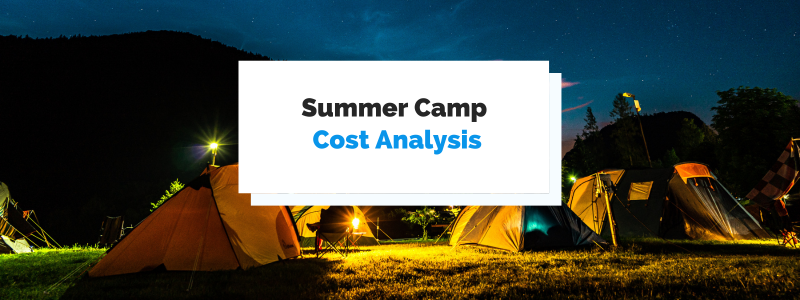Running a summer camp is a business venture just like any other and, as such, demands careful planning and budgeting. However, with so many things to consider, it’s easy to miss some crucial expenses.
That’s bad news for your operation, as overlooking any of the various costs involved can lead to financial pitfalls, leaving you in a tight spot when you least expect it.
This article aims to be your financial guide, breaking down every expense that comes with running a summer camp.
We’ll delve into every little detail, starting from staffing and facility costs to the price of marketing campaigns. Finally, we’ll summarize the costs and give you the averages.
Grab your calculators, and let’s get started.
The Costs Involved in Running a Summer Camp
In the following sections, we’ll provide a breakdown of ten different types of costs you’ll encounter when running a summer camp.
Keep in mind that any figures that we mention throughout the sections will vary depending on your location, so it’s crucial to conduct your own research for a more accurate budget. Our goal isn’t to give you the exact costs but to prepare you for the kinds of expenses you may face.
With that being said, on to the first cost.
License and Permit Fees
Our first type of expense is license and permit fees.
Before you can open the doors to your summer camp, you’ll need to secure the appropriate licenses, whether you run a day camp or a residential camp. The specific types and number of licenses vary according to your country or state, so you should explore the laws that apply to you.
Thankfully, there are organizations that can be of great help, such as the American Camp Association or the European Camp Association.
They offer a wealth of information on what you need to operate legally, so make sure to check them out for the most accurate and up-to-date information.
After you’ve navigated the initial maze of fees in your first year, don’t forget about the renewal fees.
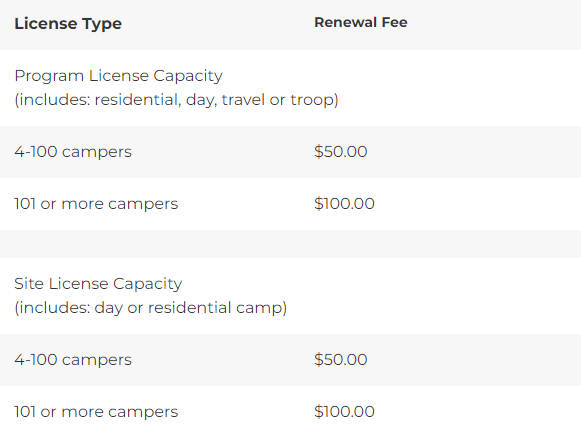
These are often overlooked but are crucial for keeping your camp operational. Make sure you’re aware of when to renew your licenses and how much you’ll need to pay, as these fees can vary depending on your camp’s size and type.
Finally, don’t overlook lesser-known permits related to specific camp activities and facilities, such as a zip line permit.
Overall, these licenses and permits are non-negotiable expenses and key for keeping your camp compliant with any regulations.
Insurance Fees
Before we move on to other costs, let’s cover another legal aspect of your camp.
We’re talking about the cost of obtaining various kinds of insurance, which is crucial for protecting your camp from potential legal liabilities. There are several insurance policies that you might consider, such as the ones illustrated below.
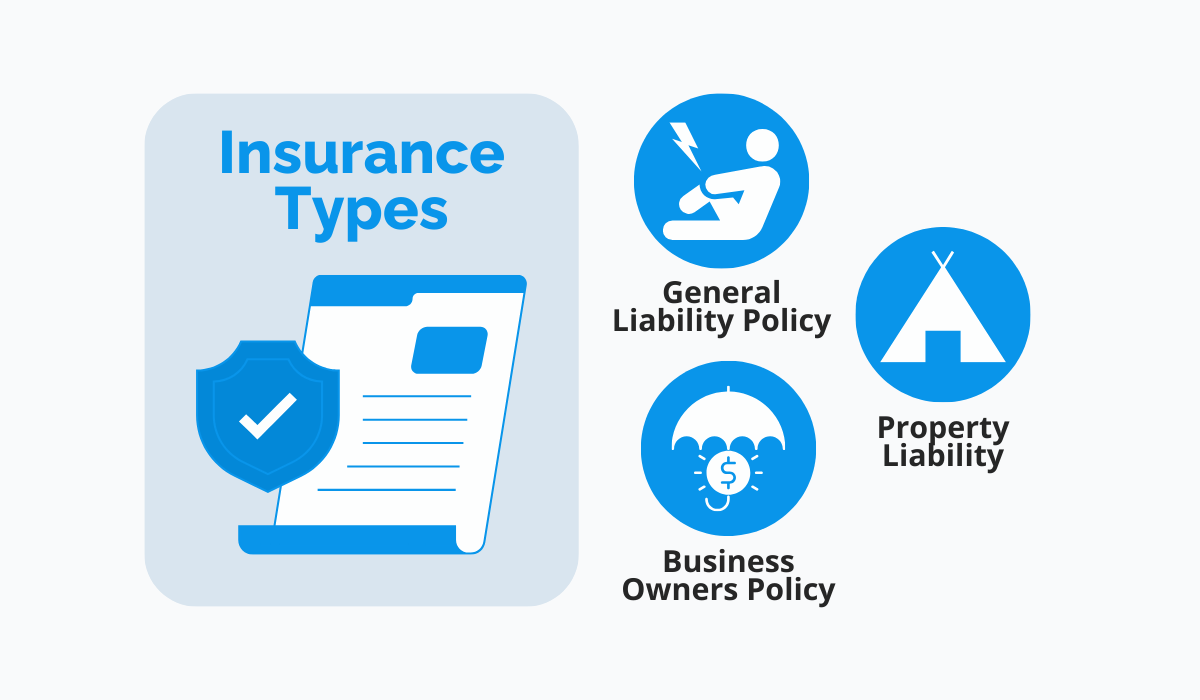
For instance, a general liability policy will cover you if, say, one of your campers gets injured. Property liability insurance, on the other hand, protects you from damages to your camp facilities.
To save you some time, consider getting a Business Owner’s Policy. This policy combines property insurance, liability insurance, and business interruption insurance into one package, providing a financial safety net for various aspects of your camp operations.
So, ensure you have the proper coverage and be prepared for accidents or incidents during camp. It’s better to be safe than sorry, especially when the well-being of children is involved.
Facility Rental Fees
Now that we’ve covered the legalities, let’s talk about where your camp will actually take place.
If you haven’t already purchased land, this is where facility rental fees come into play. Rent costs will vary greatly depending on your specific region and will generally be dependant on the following factors:
- Location and size
- Time of year and demand
- Amenities and facilities available
A prime location and a larger area will naturally cost more. However, expect the prices to soar even higher if you’re looking to rent during the peak summer months, especially if the demand for that specific land is high.
Also, take into account that campgrounds that have various amenities and facilities will cost more.
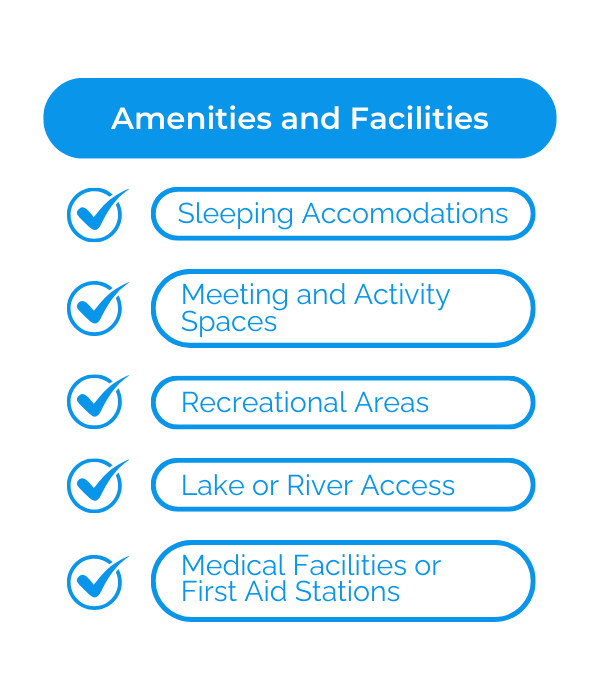
But remember, a campsite with more amenities and facilities can also allow you to charge higher fees for your camp, potentially offsetting some of these costs.
In conclusion, the location and amenities of your camp can make or break the camp experience, so choose wisely and budget accordingly.
Utility Fees
Let’s shift our focus to the ongoing costs that keep your camp running smoothly.
All those facilities and amenities come with their own set of maintenance and utility bills. These can be some of the higher costs on this list, especially if you have a large camp. Some standard utilities that you need to consider are illustrated next.

Electricity will likely be your highest utility cost, closely followed by heating and cooling expenses. For a summer camp, heating will probably only be necessary for unusually cold nights, but you will likely have to resort to cooling your facilities.
Next up is water, which will usually be the lowest cost among the utilities, but it’s essential for both consumption and sanitation.
Don’t forget about maintenance and cleaning costs. You’ll need to hire professional cleaning staff and repair personnel to occasionally come and conduct the necessary maintenance. Finally, internet and phone services are optional costs, depending on whether you need these services at your camp.
Utilities are a constant and necessary expense, so take them into account to keep your camp functional and comfortable.
Staff Expenses
Next up is the lifeblood of your camp—your staff.
Hiring a competent team is essential when managing a summer camp, and a large chunk of your budget will go toward their salaries.
Consider the various employees that you will have at your camp:
- Camp counselor
- Program coordinators
- Health officer
- Kitchen staff
- Administrative staff
To attract the best talent for each position, you’ll need to offer competitive salaries.

For instance, the image above shows the average hourly pay for camp counselors, which you might consider when setting your budget. Even if you can’t manage the average salary, you will have to adhere to minimum wage laws.
But salaries aren’t the only staff-related expense. Other costs to consider include recruiting and training expenses, as well as costs in obtaining and renewing staff accreditation and certificates.
It’s crucial to take all of these expenses into account, as having well-trained, certified staff helps ensure the safety and enjoyment of your campers.
Software Expenses
Let’s talk tech for a moment.
Modern software solutions can significantly improve the effectiveness of your camp management, aiding in streamlined registration of campers, payment processing, and much more. While these tools are more or less a necessity for smooth operations, they do come at a cost.
To cut costs, you might be tempted to avoid buying a software solution altogether. But before you pick this option, research the various tools available.
If you’re looking for robust camp registration software that won’t break the bank, consider Regpack.
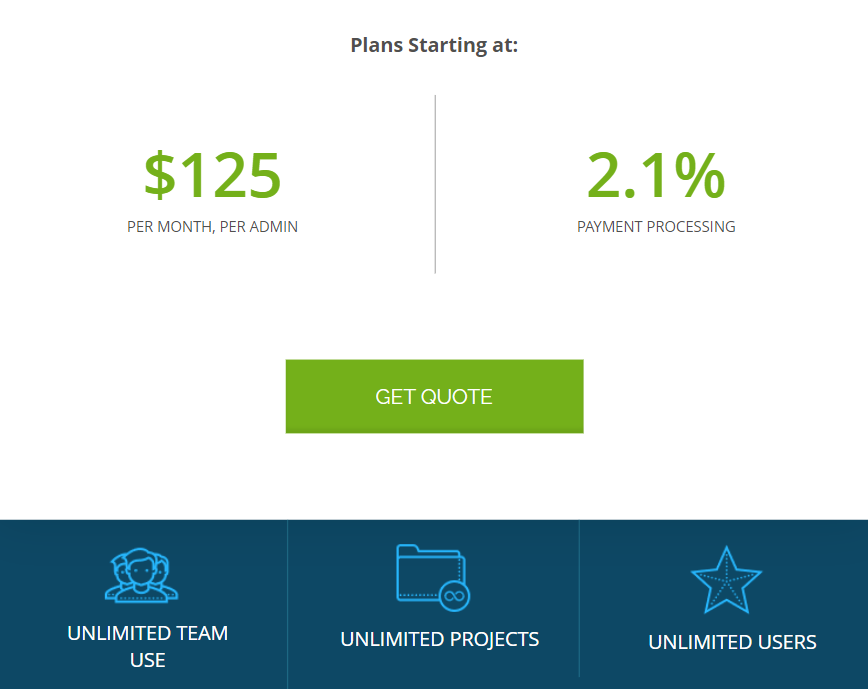
With a single monthly fee, you get unlimited access to our software and its many features designed to help you run your camp better.
Investing in tools like Regpack can quickly pay for themselves by ensuring more camp registrations, fewer cancellations, and more consistent revenue through automated billing options.
All in all, while software expenses are an additional cost, they are also an investment that can improve efficiency and even increase revenue.
Equipment and Supply Costs
Moving on, let’s delve into the tangible assets that make your camp a fun and engaging experience.
A great camp with a lot of programs, activities, and facilities will require an investment in various supplies and equipment. Take a look at some of the various items you may have to buy in the following image.
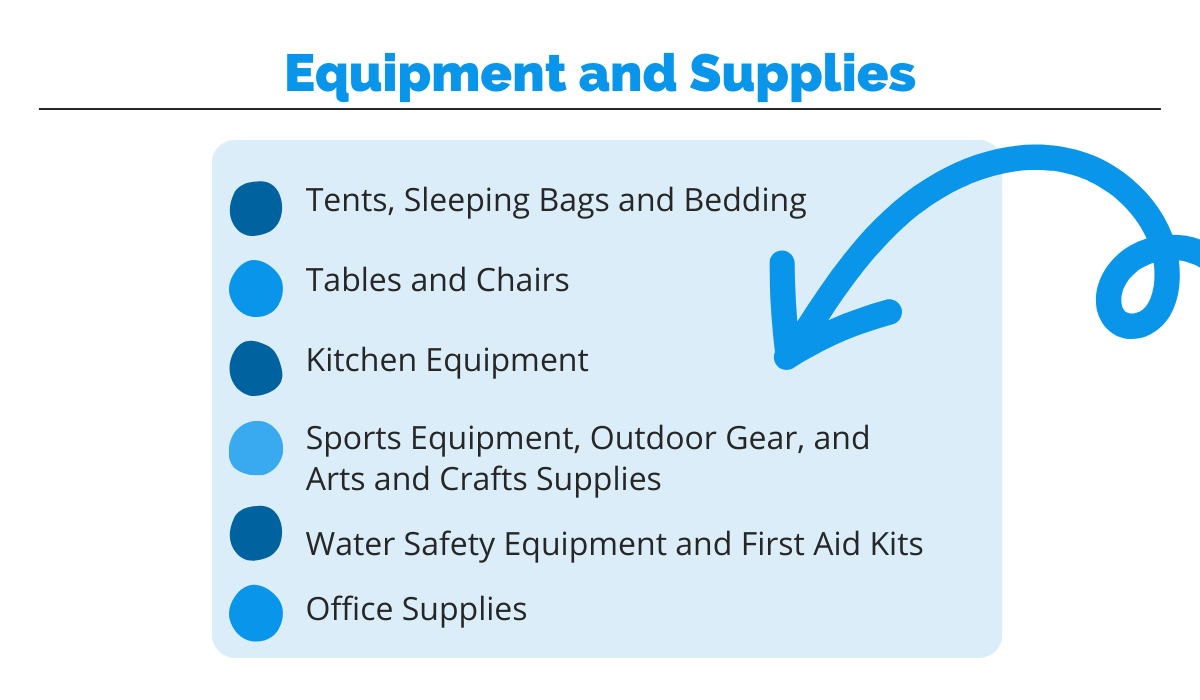
As you may have guessed, some items are essential for any camp—like bedding, tables, chairs, and kitchen supplies.
For specialized activities, the equipment you’ll need will vary. Do you have mountain climbing activities? You’ll need the appropriate outdoor gear. Does your camp have a lake? Then swimming gear is a must.
Don’t forget that some of this equipment will have ongoing maintenance costs. Broken items will need fixing and might need to eventually be replaced. It’s a good idea to include a maintenance fee in your camp registration costs to cover the wear and tear of equipment during the camp.
Budget wisely, and remember that well-chosen equipment and supplies can also be a selling point for potential campers.
Food and Beverage Costs
For the eighth item on our list, we have food and beverage costs.
When you’re running a summer camp, you have the responsibility to feed both your campers and your staff members. But you need to plan this process accordingly so these expenses don’t eat away at your budget.
The actual costs can vary dramatically depending on the size of your camp, the number of campers, and whether you offer specialized meal options like vegan or gluten-free.
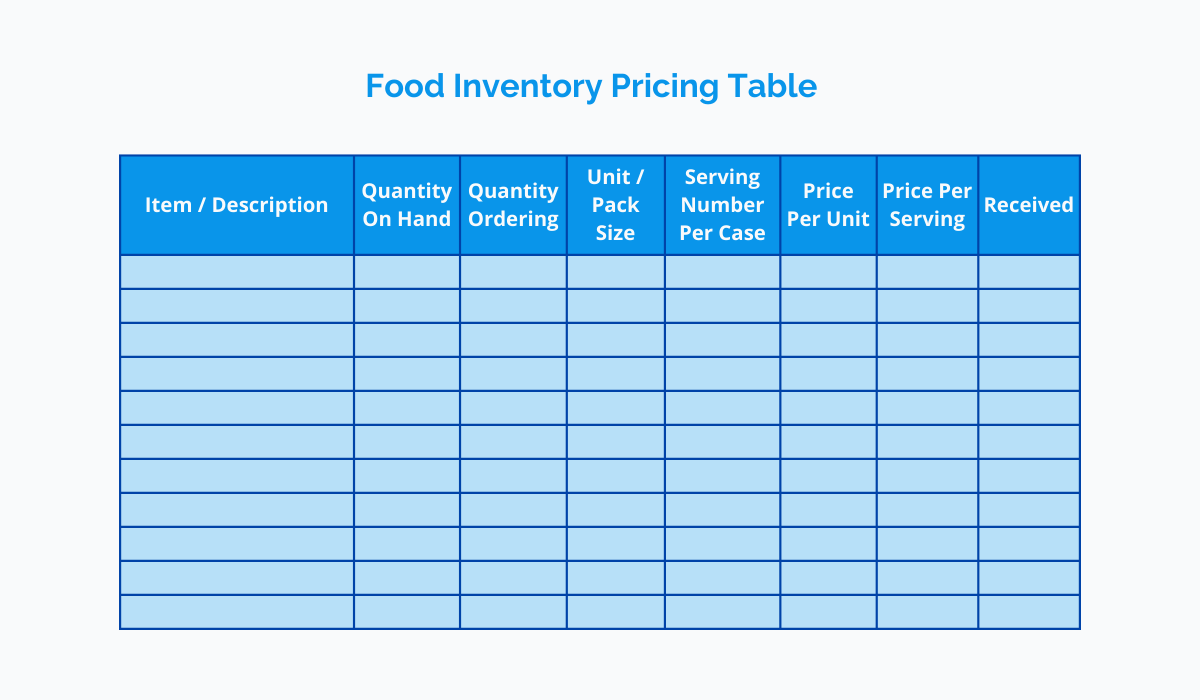
To manage these costs effectively, we recommend using a food inventory pricing table like the one shown above.
This table allows you to track each food and drink item and their prices as well as help you ensure you neither over-order nor under-order a particular item. It’s a lifesaver for avoiding food waste and a handy budgeting tool to get the most bang for your buck.
Food and beverage costs are ones you will need to continuously track throughout your camp operations. By utilizing tools like a food inventory table, you can keep these costs in check while still providing quality meals for everyone.
Transportation Expenses
Moving on to another essential aspect of camp operations, there are transportation expenses.
Whether it’s shuttling campers to and from the campsite or taking them on field trips, transportation is a cost you can’t ignore. The most substantial types of transportation costs are illustrated in the next graphic.
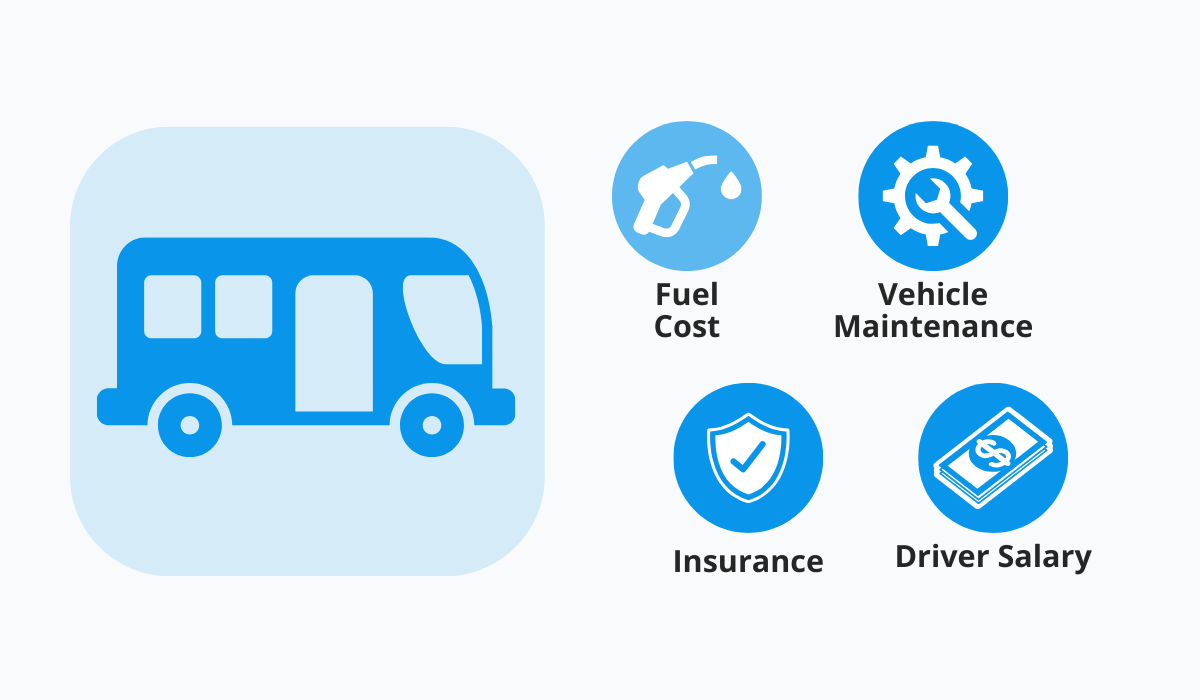
The most expensive aspects will probably be the fuel and driver salaries. However, you also need to factor in vehicle maintenance and repair costs. While you might not need to repair a vehicle during the duration of your camp, it’s wise to set aside a rainy day fund for unexpected scenarios.
And let’s not forget about insurance policies for your vehicles, which are a must-have in case of unforeseen accidents and emergencies.
To cut costs in this area, consider using electric buses and provide the option for parents to transport their children to and from camp—offering them a discount on the camp registration fee in return.
By planning and considering all of these costs, you ensure a smooth and safe transport experience for your campers.
Marketing and Advertising Expenses
Finally, let’s talk about the engine that drives your camp’s visibility and enrollment—marketing and advertising.
One key challenge of camp management is marketing the camp with limited resources. The costs can vary greatly depending on whether you’ll employ an agency or handle the marketing yourself.
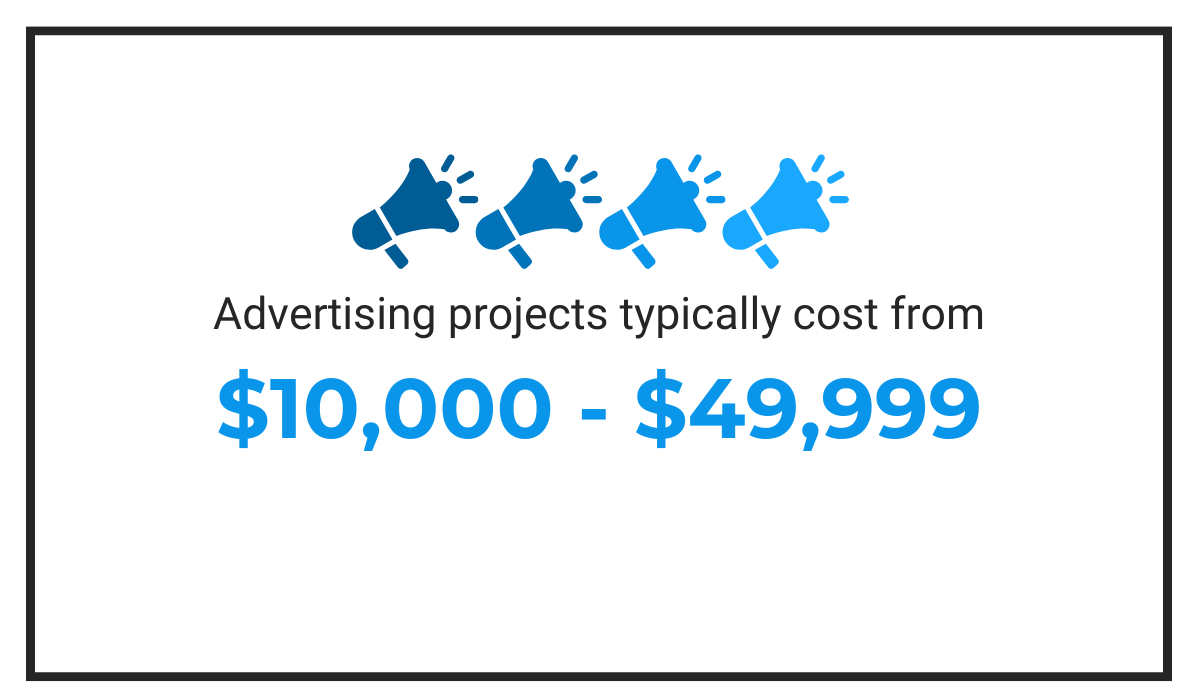
According to the data from Clutch shown above, employing ad agencies can accumulate quite a bit of expenses. A do-it-yourself approach will be notably less expensive but might be less effective as well.
Moreover, traditional and digital marketing have different costs. Consider some of the traditional marketing channels listed next:
- Television and radio commercials
- Newspaper and magazine ads
- Billboards
- Banners or signs
- Direct mailers or flyers
- Brochures
Investing in these methods can be more expensive than digital marketing strategies.
However, don’t write traditional marketing off just yet.
A carefully distributed flyer in a classroom full of potential campers can sometimes go a long way, so consider the advantages and disadvantages.
Conversely, digital marketing channels like blogs, social media ads, SEO, and email marketing can be more budget-friendly and reach a wider audience.
Whether you opt for traditional or digital, and an ad agency or DIY marketing, don’t skimp out on these costs. Effective marketing is essential for filling your camp to capacity and ensuring its success.
The Average Cost of Running a Summer Camp
With all these costs in mind, let’s consider what the average expenses for running a summer camp might look like.
The American Camp Association has neatly listed all the financial considerations of running a camp in the following article.
 Illustration: Regpack / Data: ACA
Illustration: Regpack / Data: ACA
As you can see in the graph above, the costs vary, with a day camp being about half as expensive as running a resident camp. This is primarily because resident camps require more extensive facilities, 24/7 staffing, and additional meals and activities.
If these costs seem overwhelming, consider some budgeting strategies.
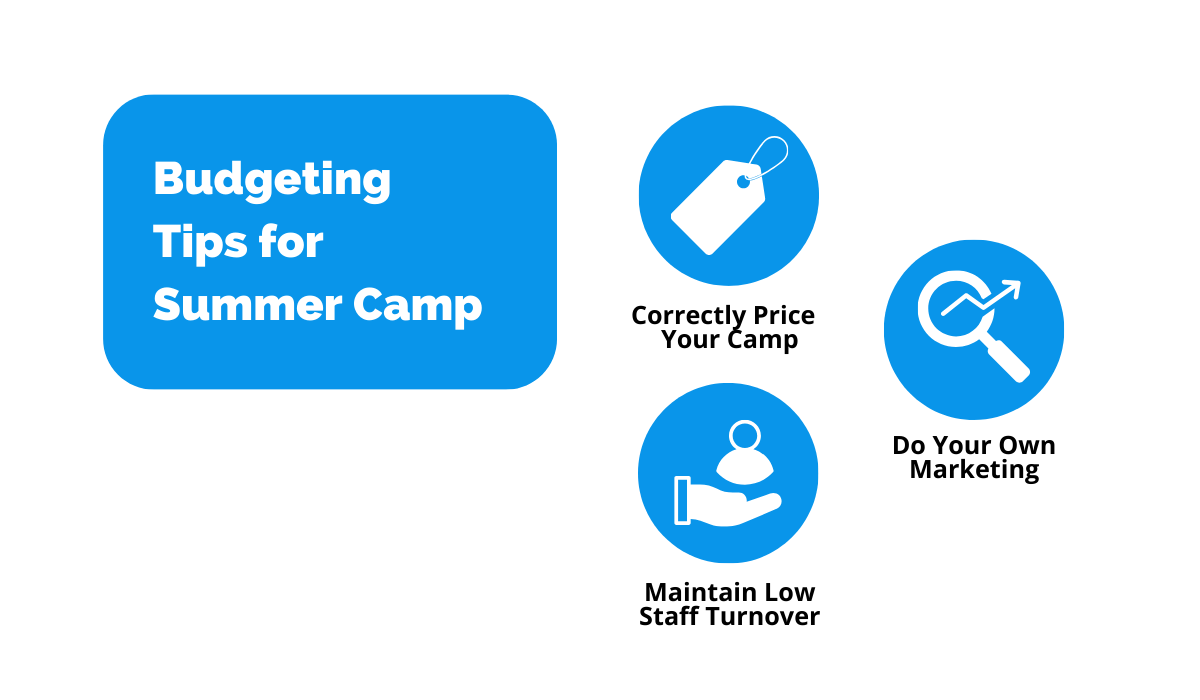
One key consideration is correctly pricing your camp registration fees. This will help you cover your costs while still offering a competitive price to attract campers.
Furthermore, you can cut a lot of costs if you do your own marketing. Ad agencies are great, but digital marketing is highly effective and much cheaper. Learning the basics can help you start on your own and expand later.
Finally, try to keep your staff happy to ensure a low staff turnover. Training and certification costs can mount up if you change your staff too often, and a stable team is more efficient and effective.
Running a summer camp is a complex financial endeavor with various costs to consider. However, with careful planning and budgeting, it’s entirely possible to offer a fantastic experience without breaking the bank.
Conclusion
With that, we’ve concluded our journey through the financial landscape of running a summer camp.
We covered essential costs like insurance, staffing, facilities, equipment, and marketing and gave you the overall average costs that you should keep in mind.
Our hope is that you walk away with a comprehensive understanding of what it truly costs to operate a successful summer camp.
Armed with this knowledge, you can make informed financial decisions, optimize your budget, and ultimately run a more profitable and rewarding summer camp.
So don’t forget to crunch those numbers and make sure unexpected costs don’t ruin the fun for everyone.


